Enhance your Safety Training with AR/VR Technology
OVERVIEW
Immersive technologies have opened up new avenues for immersive and engaging safety training programs, allowing employees to experience and learn from potentially hazardous scenarios without putting themselves or others at risk. Using AR and VR technologies in safety training allows employees to learn and practice safety protocols in a safe and controlled environment.
FEATURES OF AR/VR IN SAFETY TRAINING
HAZARD RECOGNITION
AR/VR can be used to simulate hazardous situations, making it easier for workers to identify potential hazards and take appropriate measures to avoid them. Workers can practice identifying hazards in a controlled environment without the risk of real-life consequences.
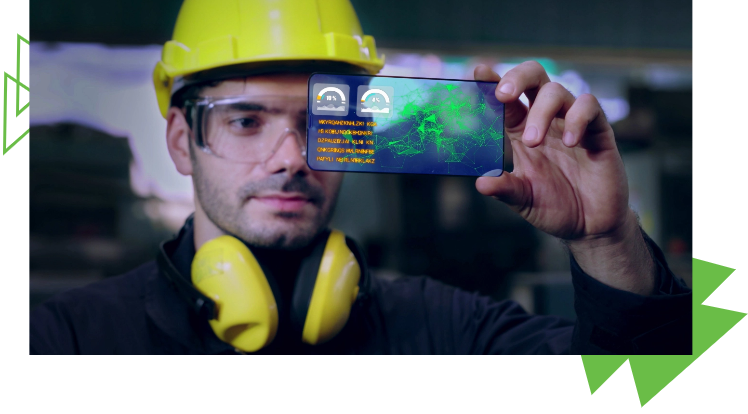
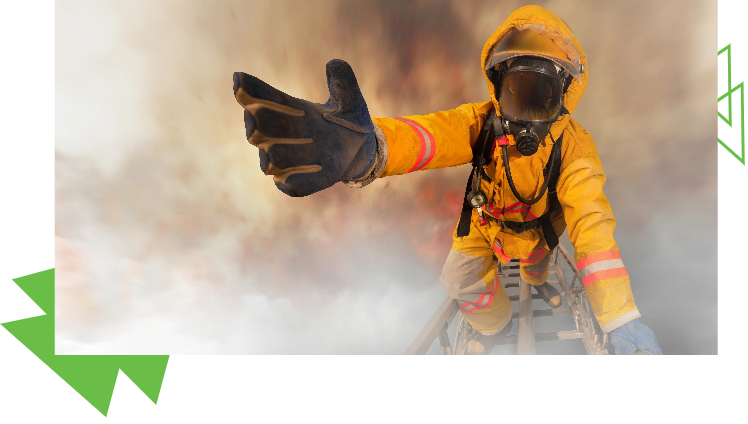
EMERGENCY RESPONSE TRAINING
With VR technology, we can simulate emergency scenarios, such as fire, chemical spills, and natural disasters. Workers can be trained on the appropriate procedures to follow in such situations, reducing the risk of injuries and fatalities.
EMERGENCY RESPONSE TRAINING
With VR technology, we can simulate emergency scenarios, such as fire, chemical spills, and natural disasters. Workers can be trained on the appropriate procedures to follow in such situations, reducing the risk of injuries and fatalities.

EQUIPMENT OPERATION
AR/VR can be used to simulate the operation of complex equipment, such as heavy machinery and industrial equipment. Workers can practise operating equipment in a safe environment before being exposed to real-life scenarios.
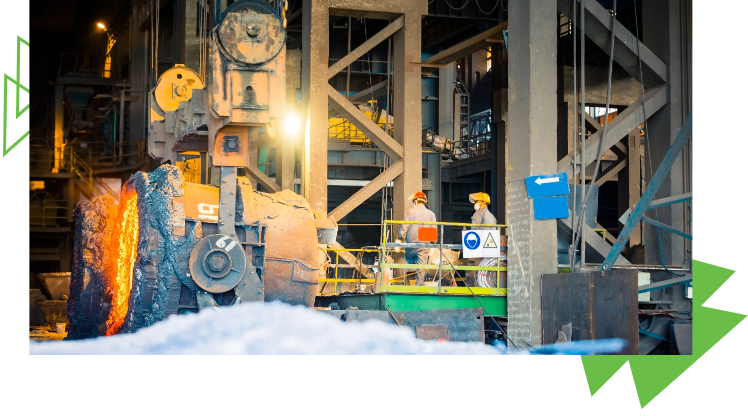
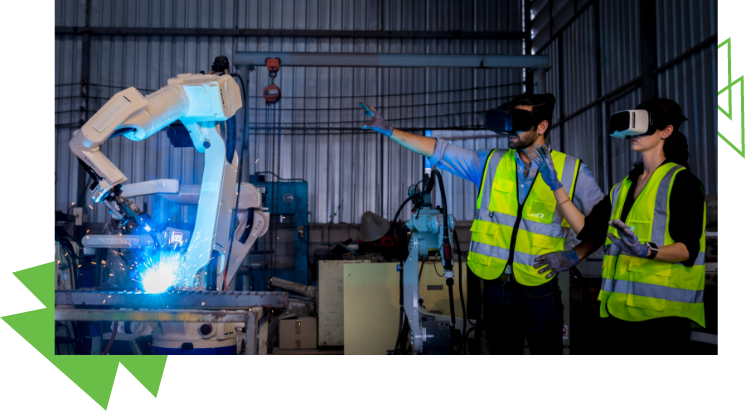
BEHAVIOURAL TRAINING
AR/VR can be used to train workers on safe behaviour, such as using proper lifting techniques, following safety protocols, and maintaining proper posture. Workers can practise these behaviours in a simulated environment to reduce the risk of accidents and injuries.
BEHAVIOURAL TRAINING
AR/VR can be used to train workers on safe behaviour, such as using proper lifting techniques, following safety protocols, and maintaining proper posture. Workers can practise these behaviours in a simulated environment to reduce the risk of accidents and injuries.

SAFETY PROCEDURE TRAINING
AR/VR can be used to train employees on safety procedures, such as lockout/tagout, confined space entry, and fall protection. Allows also to simulate working at heights, allowing employees to learn how to work safely on scaffolds, ladders, and rooftops
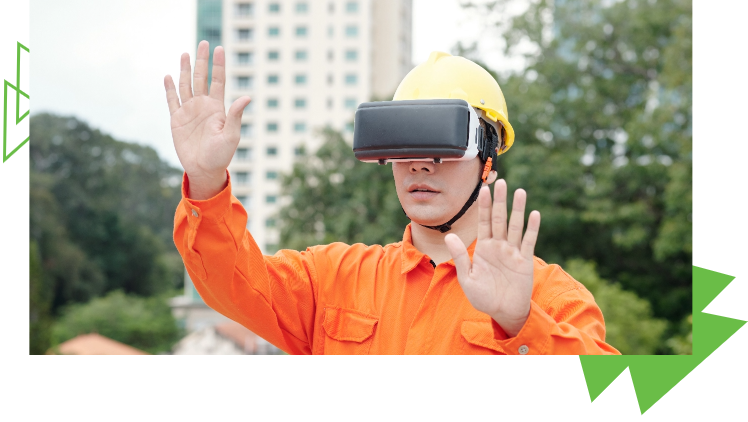
KEY BENEFITS OF AR/VR IN SAFETY TRAINING
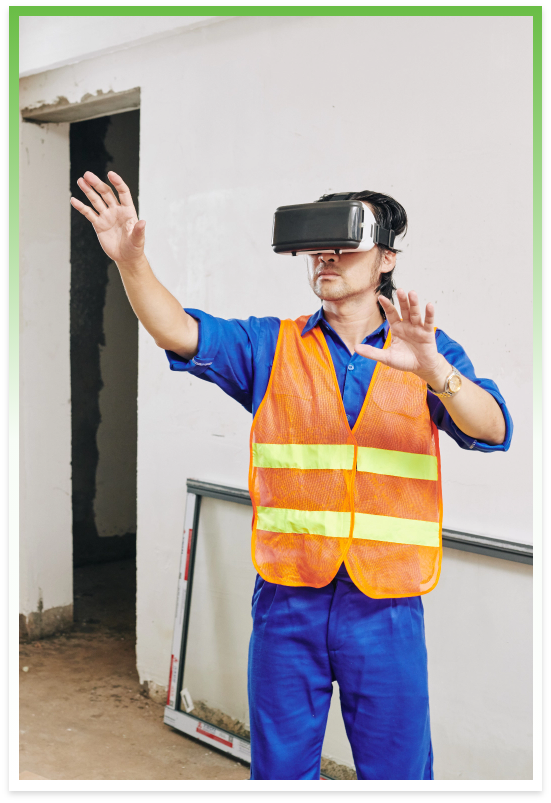
Realistic simulations
VR can provide realistic simulations of hazardous situations or processes that may be difficult or dangerous to replicate in real life. This allows trainees to experience and practice handling dangerous scenarios in a safe, controlled environment.
Interactive training
AR/VR can provide interactive training that allows trainees to engage with the content, rather than simply watching or reading about it. This can enhance engagement and retention of information.
Risk-free environment
AR/VR can provide a risk-free environment for trainees to make mistakes and learn from them without putting themselves or others in danger.
Remote training
With help of VR, we can provide remote training options, allowing trainees to access training modules from anywhere in the world. This can be particularly useful for industries with distributed workforces or for providing refresher training.
Cost-effective
AR/VR can be a cost-effective alternative to traditional safety training methods, particularly for industries that require expensive equipment or have high-risk environments.
OUR SOLUTIONS

3D SOLUTIONS
Using 3D technology, you can create realistic virtual environments for safety training. This can include simulations of hazardous environments, machinery, and equipment, allowing trainees to experience potential dangers in a controlled environment.

APP SOLUTIONS
Mobile apps can also be used for safety training. Our customised VRapps can provide employees with information on safety procedures, hazard identification, and emergency response, among other things. Apps can also include interactive elements, such as quizzes or simulations, to engage trainees and reinforce learning.

XR SOLUTIONS
XR solutions, which include virtual reality (VR) and augmented reality (AR), can provide immersive and interactive safety training experiences. VR allows trainees to experience potentially dangerous situations in a simulated environment, while AR overlays digital information onto the real world, providing a more interactive training experience.

WEB SOLUTIONS
Web-based training solutions can be used for safety training as well. These solutions can be accessed from any device with an internet connection, making it easy for employees to access the training materials from their home or office.
Elevate your safety training with our AR/VR technology.
Let us know how we can assist your industry in embracing the limitless possibilities of the AR, VR and Metaverse. Fill out the form below, and our team will get in touch with you promptly.
AR/VR (Augmented Reality/Virtual Reality) is a technology that enables users to experience simulated environments that resemble real-world scenarios. AR/VR in safety training is the use of this technology to simulate safety-related situations and train employees on how to respond to them.
AR/VR technology uses a combination of computer-generated graphics, sound, and haptic feedback to create a simulated environment that the user can interact with. In safety training, this technology can be used to create scenarios that simulate hazardous situations, such as fires or chemical spills.
AR/VR in safety training can provide a safe and controlled environment for employees to practise safety procedures without risking injury. It can also reduce the costs associated with traditional training methods, such as hiring trainers, renting training facilities, and buying safety equipment.
Studies have shown that AR/VR technology can improve safety training outcomes by increasing retention, engagement, and performance. It can also provide employees with a more immersive and realistic training experience, which can help them develop better safety skills.
AR/VR technology can be integrated into existing safety training programs by identifying areas where the technology can be used to improve training outcomes. For example, it can be used to provide hands-on training for hazardous situations that are difficult to simulate in real life.


